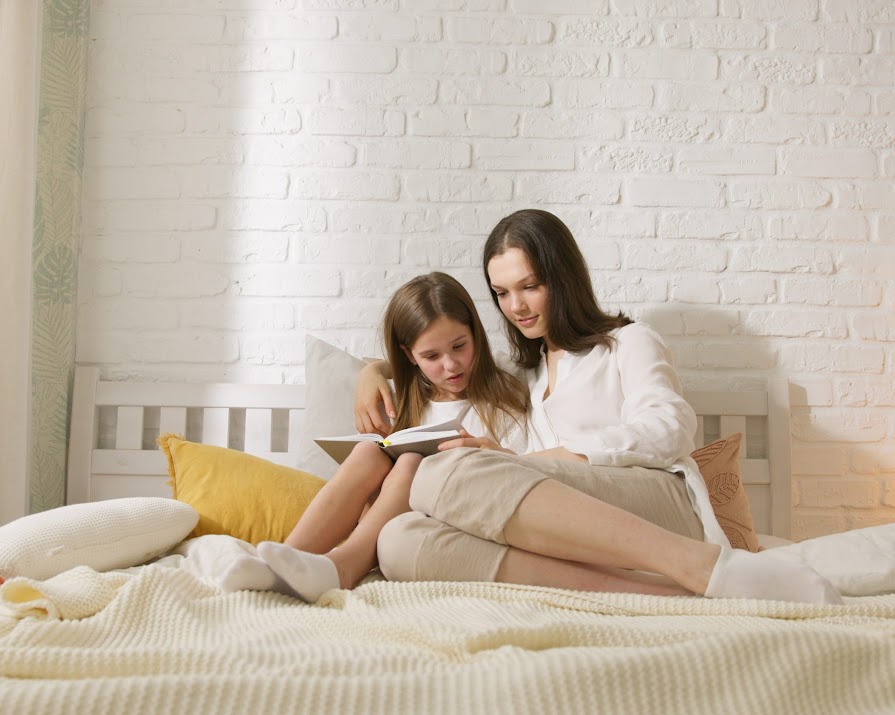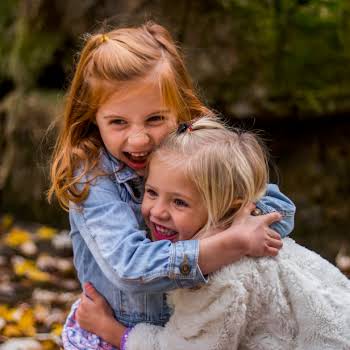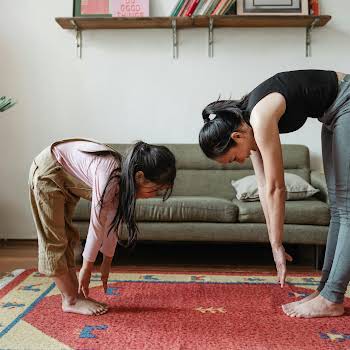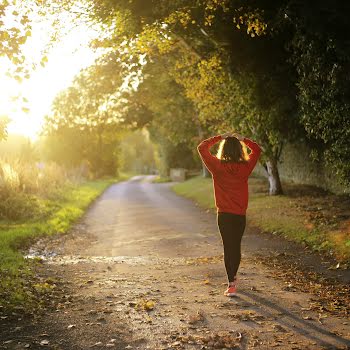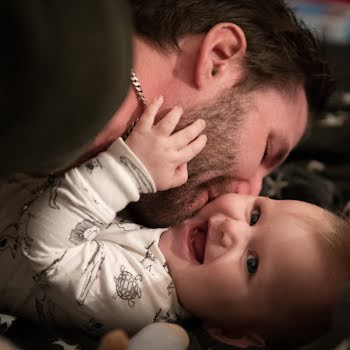
Anxiety can show up differently in children – here’s how to spot the signs and help them navigate it
By IMAGE
23rd Jun 2022
23rd Jun 2022
'I’ve had a few hands-on-my-head moments when I realised that I had totally missed the signs of anxiety in my children, because they weren’t glaringly obvious.' In the first part of a new series, Clinical Psychologist and Parent Guide, Dr Julie Meehan helps parents spot the not-so-obvious signs of anxiety in children.
Anxiety. We are all hard-wired to experience it, so that, essentially, it can help us to survive a threat and make sure we avoid that threat again in the future.
Our nervous systems take over when we perceive a threat. Whether the threat is real or not, our brains recognise it as a genuine threat, and a spectrum of neurochemical, physical, emotional, cognitive and behavioural reactions happen.
All in a matter of a few moments.
Advertisement
A spectrum of reactions can range from a mild sense of unease and worry to full-on panic to a collapse and freeze state where we feel completely disconnected from what is happening.
There’s a spectrum of how we navigate these feelings of unsafety too: from the just-about-manageable to the utterly debilitating, and everything in between.
Anxiety as a shapeshifter
I see anxiety as a bit of a shape-shifter – once I think I have a hold of it, it seems to slip through my fingers. Sometimes it shows up more in my gut, sometimes more in my heart – and always in the head (big Velcro thoughts that blow everything out of proportion and seem so convincing).
Anxiety is such a big subject, it can be really difficult to unpack. Its shapeshifting nature can add to the apparent mystery that shrouds anxiety – difficult to grasp and at times impossible to navigate. And so, we and our children can often feel powerless to know how to meet it.
Developing an essential skillset
Advertisement
The good news is that it is possible to navigate anxiety and grow stronger in the process.
I see navigating anxiety, as well as developing the capacity to grow from life’s challenges, as an essential life skill, just like learning how to swim or read and write.
A skill set that we can support our children and ourselves to develop.
Research has shown that there are many ways we can support our children so that they can ultimately learn to resource themselves when anxiety and overwhelm show up.
Not only do these strategies help them to navigate their anxiety, but they may also help them to gain a greater understanding of their difficulties and equip them to feel resourced for the future, should anxiety, or any other adversity, come into their lives.
And that’s resilience.
Advertisement

Demystifying anxiety – one step at a time
In this piece and future ones, I attempt to demystify anxiety by breaking the steps down to one strategy at a time. Starting from a place where we can take small steps — rather than trying to take huge leaps – can allow every step we take to support our children to feel a bit more do-able.
Strategy # 1
Recognising the signs – the obvious and not so obvious
As a psychologist, I work with anxiety in children and young people a lot. And yet, I’ve had a few hands-on-my-head moments when I realised that I had totally missed the signs of anxiety in my children, because they weren’t glaringly obvious.
That’s because anxiety likes to shapeshift. It can creep up on us over time and it can show up differently in children and young people than it does in adults.
Anger and resistance
Some children and young people tend to lash out more and appear more aggressive when they are feeling overwhelmed. Irritability increases, with the ‘fight’ aspect of fight or flight showing up in their nervous systems. Resistance to doing the small and the big stuff in their lives can show up – short term or long term. An energy of ‘No’ begins to manifest more and more.
Advertisement
Avoidance
An energy of No leads on to avoidance. This might seem like an obvious one, but sometimes it can take a while to clock what’s going on for your child, especially if they are finding it difficult to articulate the big and often murky emotions of anxiety.
Under the radar
While some children lash out, others go quiet and withdraw – the ‘flight’ aspect of fight or flight. Their nervous systems are seeking to get away from the anxiety trigger, and while this can show up as avoidance, it can also show up as a quiet withdrawal that can almost be imperceptible at first. Especially in school.
The stomach
Anxiety often manifests in the stomach for children. Sore tummies, now and then, or consistently over time can indeed have organic causes, but they can also be attributable to an internalised sense of unease, distress and overwhelm.
Advertisement
The head
Headaches are also a common sign of anxiety manifesting physically in the younger age groups. Our thoughts in our heads become skewed towards the negative as well: over-emphasis on what they can’t do, and under-emphasis on what they can do; over-emphasis on things going really wrong, under-emphasis on things turning out well. One negative thought leading to another. A problem-saturated world view can creep in.
Worries and checking
Worries are a common aspect of the human experience, but when you notice your child doing more of it, or it is affecting their functioning, then it may be a sign that anxiety is showing up for them. Checking in with you and reassurance-seeking is another behavioural trait of anxiety that we are probably all familiar with. The difficulty with this behaviour is when the mind never seems satisfied with the response it gets, so your child asks again and again.
A bit more graspable
These signs of anxiety are by no means exhaustive. In highlighting these I want to point to the diverse and less obvious ways it can show up, which can render it difficult to grasp. Really reflecting on what anxiety might look like for your child is the first step in making it more graspable.
Advertisement
Give it a go
Ask yourself: ‘How do I know when my child is feeling anxious?’. Often you will notice that there is some change in how they are behaving and relating to themselves, others (especially you) and the world around them. You could ask other significant people in your child’s life how they might recognise anxiety in your child. And, depending on your child’s age, feel free to ask them what happens when they feel nervous.
Break it down: Ask yourself if you notice any changes in 1) the way they are behaving (e.g., are they avoiding going places? Are they crying more easily? Are they lashing out more? Are they withdrawing more in the home? Are they more irritable than usual?); 2) How they are thinking (e.g., are they speaking more negatively about themselves or others? Are they worrying a lot? Are they underestimating their ability to cope and over-estimating the chances of them failing at something?), and 3) how they are physically feeling (e.g., are they complaining of a sore tummy or head? Have their bowel movements changed? Do you notice them carrying tension in their bodies? Are they fidgeting or shaking more than usual?).
How about you?: While you are at it, take some time to reflect on how you experience anxiety – what are the signs for you? Write your thoughts and observations down.
Learning to recognise how anxiety shows up for you and your child may be the first step in supporting your child in developing a skill-set to navigate anxiety, but it is a really significant step. Start with this step, be gentle with yourself and see how you go.
© Julie Meehan, 2022
Dr Julie Meehan is a Clinical Psychologist, Parent Guide and (Imperfect) Parent.
Advertisement
Dr Julie has developed an evidence-based, step-by-step pathway for parents to follow that guides you to create more connected and trusting relationships with yourself and your child, allowing you both to meet and grow from life’s challenges, and to thrive.
You can follow The Pathway Home for Parents through Online Self-study Courses, Live Programmes and through Dr Julie’s One to One Parent Guidance Packages on www.juliemeehan.com











